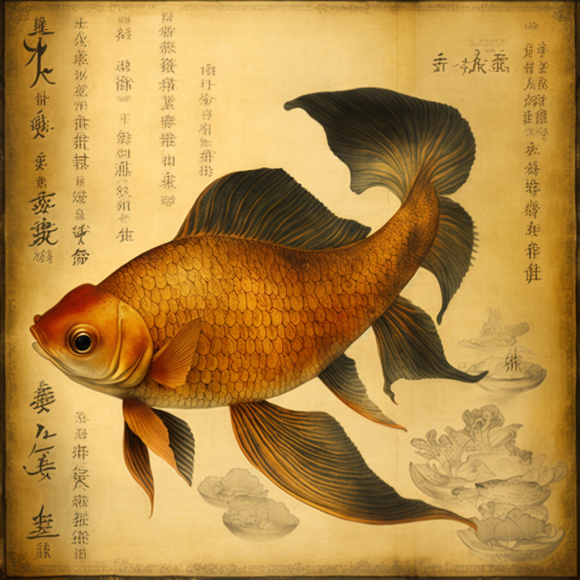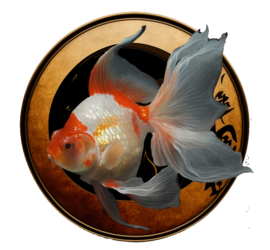
Introduction
Fancy goldfish keeping is a hobby that has been enjoyed by people around the world for centuries. From ancient China to modern-day aquariums, these beautiful fish have captured the hearts of enthusiasts everywhere. This history of fancy goldfish keeping is a rich and complex one, encompassing many different cultures and traditions. In this article, we will explore the fascinating history of this beloved hobby, from its origins to the present day.
Origins of Fancy Goldfish Keeping
The origins of fancy goldfish keeping can be traced back to ancient China, where goldfish were first domesticated over 1,000 years ago. These fish were initially kept in ponds and were primarily raised for their meat. However, it wasn’t long before people began to appreciate the beauty of these fish and started to keep them for ornamental purposes.
By the Tang Dynasty (618-907 AD), goldfish breeding had become a popular pastime, and a variety of different strains had been developed. These early fancy goldfish were quite different from the fish we know today, with short fins and a bulky body shape.
In the centuries that followed, the art of fancy goldfish breeding continued to evolve. During the Ming Dynasty (1368-1644 AD), goldfish were bred to have elongated fins and tails, creating the iconic long-finned varieties that are still popular today. By the Qing Dynasty (1644-1912 AD), goldfish had become a symbol of wealth and prosperity, and ornamental ponds filled with these beautiful fish could be found throughout China.
The history of goldfish keeping in Japan dates back over a thousand years, with the first written records of goldfish breeding appearing in the Nihon Shoki, a historical chronicle compiled in the eighth century. In the Edo period (1603-1868), goldfish keeping became increasingly popular among the Japanese aristocracy, who began breeding and collecting ornamental goldfish as a status symbol. The first recorded instance of the ryukin variety of goldfish can be traced back to this period, and it quickly became one of the most popular and iconic varieties in Japanese goldfish keeping. Today, Japanese goldfish breeders and enthusiasts continue to refine and perfect the art of goldfish keeping, with some of the world’s most stunning and unique goldfish varieties originating in Japan.
In Japan, goldfish keeping has been elevated to an art form, with a long history and tradition of breeding and cultivating goldfish for beauty and perfection. Japanese goldfish, or “kingyo,” are highly prized for their unique shapes and colors, with varieties such as the fantail, ryukin, and wakin being especially popular. Japanese goldfish keepers place great emphasis on achieving ideal proportions and traits in their fish, often using selective breeding and careful grooming techniques to achieve the desired results. The art of Japanese goldfish keeping has influenced the global goldfish community and has helped to inspire new trends and techniques in the hobby.
Fancy Goldfish Keeping in Europe
Fancy goldfish first arrived in Europe in the late 17th century, when a group of fish were sent to the Netherlands from Japan as a gift to the Dutch East India Company. These fish were likely some of the first examples of what we now know as the Ryukin variety of fancy goldfish.
From the Netherlands, fancy goldfish breeding quickly spread throughout Europe. By the 18th century, these fish had become quite popular among European nobility, and ornamental ponds filled with fancy goldfish could be found in many of the grand estates of the time.
However, it wasn’t until the mid-19th century that fancy goldfish breeding really took off in Europe. This was largely due to the work of goldfish breeder Hugo Mulertt, who is credited with developing many of the early European fancy goldfish varieties.
Mulertt was based in Germany and began his work in the mid-1800s. Over the course of several decades, he developed many new fancy goldfish varieties, including the Oranda, Veiltail, and Telescope Eye. These varieties were quickly adopted by breeders throughout Europe and became the foundation for many of the modern fancy goldfish breeds we know today.
Fancy Goldfish Keeping in America
Fancy goldfish breeding also made its way to America in the late 19th century, although it took some time for the hobby to really take off. One of the earliest examples of fancy goldfish breeding in America can be traced back to a man named William M. Innes, who began breeding goldfish in the late 1800s.
Innes was based in Philadelphia and initially focused on developing a hardy, disease-resistant goldfish variety that could survive in the harsh conditions of American ponds. However, he also began experimenting with fancy goldfish breeding and is credited with developing several new varieties, including the Lionhead and Ranchu.
By the early 20th century, fancy goldfish breeding had become quite popular in America, and the first American fancy goldfish club was established in 1902. Over the next few decades, the hobby continued to grow, and many new varieties were developed by American breeders.
Modern Fancy Goldfish Keeping
During this time, goldfish breeding also became more focused on creating fish with specific physical traits, such as longer fins, brighter colors, and unique body shapes. This marked the beginning of the “fancy” goldfish, a term used to describe goldfish bred for their ornamental value rather than their practical uses.
By the early 1900s, fancy goldfish had become increasingly popular among enthusiasts in the UK, Europe, and the United States. The first fancy goldfish shows were held in the UK in the early 1900s, and by the 1920s, goldfish shows were a regular feature of the hobby.
One of the most influential breeders of fancy goldfish during this period was William T. Innes, an American author, and fish dealer. Innes published several books on fishkeeping, including “The Book of the Goldfish,” which remains a classic reference on the subject. Innes was also a prolific breeder and developed several new varieties of fancy goldfish, including the Oranda and the Ryukin.
In addition to the development of new goldfish varieties, the 20th century also saw the emergence of goldfish clubs and societies dedicated to promoting and preserving the art of goldfish keeping. One of the earliest and most notable organizations was the Northern Goldfish and Pond Life Association, which was established in Manchester in 1893. This club played a crucial role in developing and refining the goldfish standard, a set of criteria used to judge goldfish competitions and exhibitions.
The goldfish standard was originally established by the Northern Goldfish and Pond Life Association in 1895 and has since been updated and revised by various organizations, including the Goldfish Society of Great Britain, which was formed in 1948. The standard includes criteria such as the size, shape, and coloration of the fish and helps to ensure that competitions are fair and consistent across different regions and clubs.
Throughout the 20th century, goldfish clubs and societies continued to flourish in the UK and around the world. Many of these organizations focused on promoting the welfare and proper care of goldfish, as well as sharing knowledge and expertise among enthusiasts. In addition, many clubs hosted regular meetings, exhibitions, and competitions to showcase the latest goldfish varieties and developments in the hobby.
One of the most prominent goldfish clubs in the UK is the Northern Goldfish and Pond Keepers Society, which was formed from the original Northern Goldfish and Pond Life Association. The society holds various events and competitions throughout the year, including an annual goldfish show and auction. Another well-known goldfish club is the Association of Midland Goldfish Keepers, which was formed in 1974 and caters to goldfish enthusiasts in the Midlands region of England. The club hosts regular meetings and events, and members can participate in competitions and share their knowledge of goldfish breeding and care.
The Bristol Aquarists Society is another notable club, with a history dating back to 1929. Unlike many other goldfish clubs, the Bristol Aquarists Society was originally a mixed society that catered to a range of aquatic hobbyists, including goldfish keepers, tropical fish enthusiasts, and marine aquarists. Today, the society continues to welcome a diverse range of members and hosts regular meetings, events, and exhibitions.
Despite the long and rich history of goldfish keeping, the hobby has faced challenges in recent years. Many goldfish clubs and societies, including the Northern Goldfish and Pond Keepers Society, are experiencing a decline in membership, and there is growing concern that without an injection of younger members, these clubs may not survive.
Despite these challenges, the future of goldfish keeping looks bright. New technologies and innovations, such as advanced filtration systems and breeding techniques, are making it easier than ever to keep goldfish healthy and happy. Furthermore, the continued efforts of goldfish clubs and societies to promote the welfare and proper care of these beloved pets are helping to ensure that the hobby remains vibrant and thriving for generations to come.
For those interested in learning more about the history and culture of goldfish keeping, there are many resources available. Books such as “Fancy Goldfish: Complete Guide to Care and Collecting” by Dr. Erik Johnson and Richard Hess provide a comprehensive overview of goldfish history, breeding, and care. Websites such as The Goldfish Council and The Goldfish Society of America offer information on goldfish varieties, standards, and events. And for those interested in joining a goldfish club or society, there are many organizations throughout the UK and around the world that welcome new hobbyists.

Recent Comments